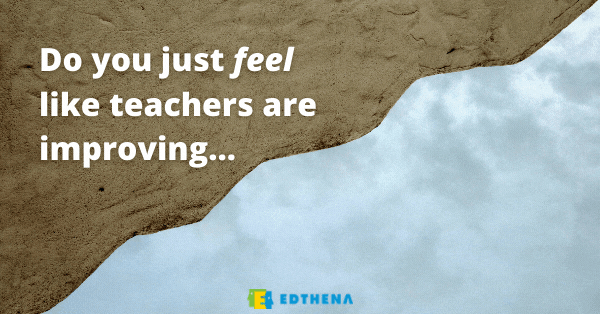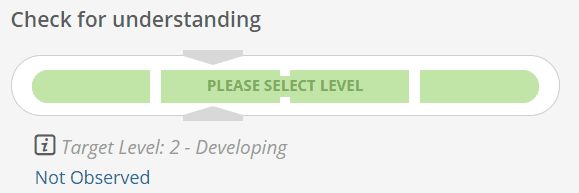An Easy Way to Make Teacher Feedback More Concrete and Actionable
As a coach or school leader, you’re observing myriad classrooms and teaching practices. You give teacher feedback through detailed notes of strengths and areas for growth.
This qualitative teacher feedback is important for improvement. But do you just sense teachers are improving?
Like any data-driven educator, you probably want to look at quantitative data to assess progress and ensure an upward trajectory.
With Edthena, you can. Inside our video coaching and professional learning platform, you can capture teacher proficiency on specific skills alongside your conversational feedback.
With just a couple more clicks, you can see a dashboard for an entire set of teachers’, from department- to district-wide, growth on any professional standard, aligned to the same framework your school already uses.
Edthena helps you turn the teacher feedback process into data that you can use to make effective decisions for your school and district.
Narrative feedback is great, but quantitative data is better
Sometimes anecdotal observations just aren’t enough. Observations focused on giving narrative feedback about teaching are, of course, helpful.
But it’s hard to make meaning about what’s happening across multiple observations or multiple teachers when all the teacher feedback is qualitative. 
As a school leader or coach, do you just feel teachers are “getting better,” or do you know they’re getting better from a clear graph showing teachers have progressed on instructional priorities from “developing” to “proficient”? Tracking quantifiable changes in teacher practice ensures your individual pieces of teacher feedback add up to schoolwide improvement.
Think back to a teacher you observed recently who’s working on student engagement. You’ve seen more participation lately—a great strength to mention in your written feedback to them.
But, even better? Quantify that progress toward professional learning goals with Leveled Indicators. Click into your current coaching cycle, which is aligned to your framework row for “Student Engagement,” and quickly capture that data point as “competent.”
Measure changes in classroom teaching after professional development trainings
Perhaps you want to measure how teachers improve with their questioning strategies after a professional development initiative.
In Edthena, teachers can upload a video clip of their questioning techniques during a lesson, provide a self-reflection, and offer feedback to other peers working on the same skill. This all happens as part of an Exploration, a tool for designing and managing evidence-based learning cycles.
As the coach, you view these video clips and provide observation comments and support for the teacher’s next steps for instructional improvement.
Now here’s how you level up that teacher feedback: align your notes to your school’s teaching framework and capture the teacher’s current skill level based on all the evidence. Their approach to questioning may be in need of improvement, developing, competent, or exemplary. 
You’ll see all these data points on each teacher’s personalized dashboard. Teachers can see their quantified data, too, and better understand their professional growth.
As you continue to watch teachers’ videos of questioning techniques throughout the year, you’ll be able to easily mark their progress with a Leveled Indicator and see over time if they are showing growth.
Leveled Indicators inside Edthena provide an evidence-based and concrete indication of teachers’ developmental trajectories.
Understanding school-level trends builds teachers’ collective efficacy
Having quantitative data points ensures you don’t mistake the trees for the forest.
Watching one teacher’s progress over time is encouraging, but you care about the whole school or the entire district. Meaningful growth must be across classrooms and buildings. After all, collective efficacy is about all teachers believing they can, and do, make an impact on students’ learning.
Reports in the Leveled Indicators feature enable coaches and other instructional leaders to see trends for an entire group of teachers, such as the middle school math department whose focus is on checks for understanding, or all the third-grade teachers working on close analyses in reading.
No more looking at dozens of individual and different data points. See them all in one beautiful and data-filled graph in the Edthena platform.
Are you someone thinking about progress across multiple schools or an entire district? Not only can you see if teachers are making progress, but you can also see it at the school level and district level. This is an efficient way to assess if your district’s professional development is working widely.
As a district administrator, you may see via midyear teacher data that certain schools need more support in priority skill areas. Tailor your professional development action plan for exactly what they need.
School improvement starts with concrete teacher feedback and support
Leveled Indicators help teachers get more clarity on where they are in their professional development and show coaches and school administrators trends across teachers, so they can use professional development resources on bigger-picture priorities.
Learn more by sending us a note at hello@edthena.com, or check out our other features here!
